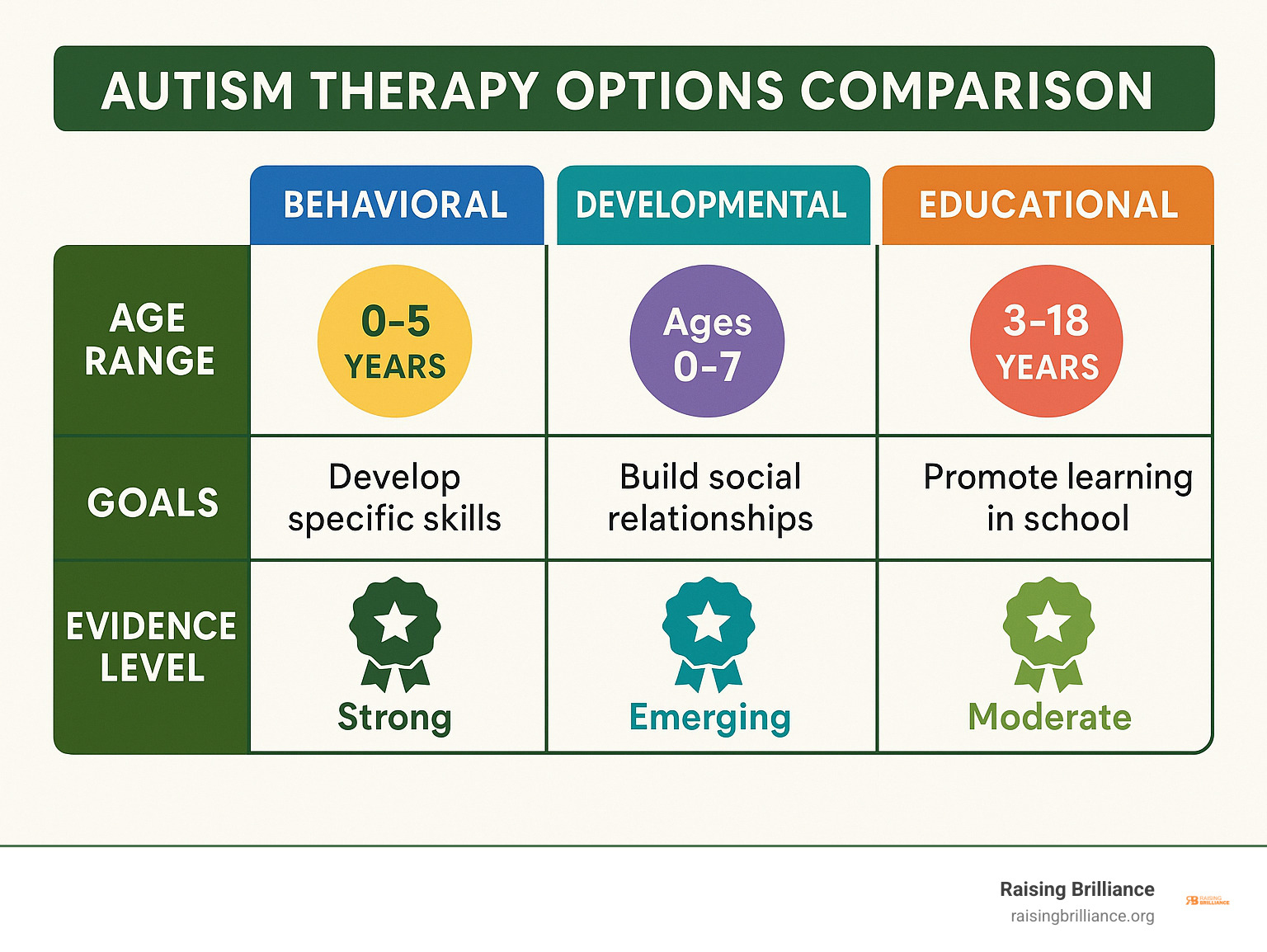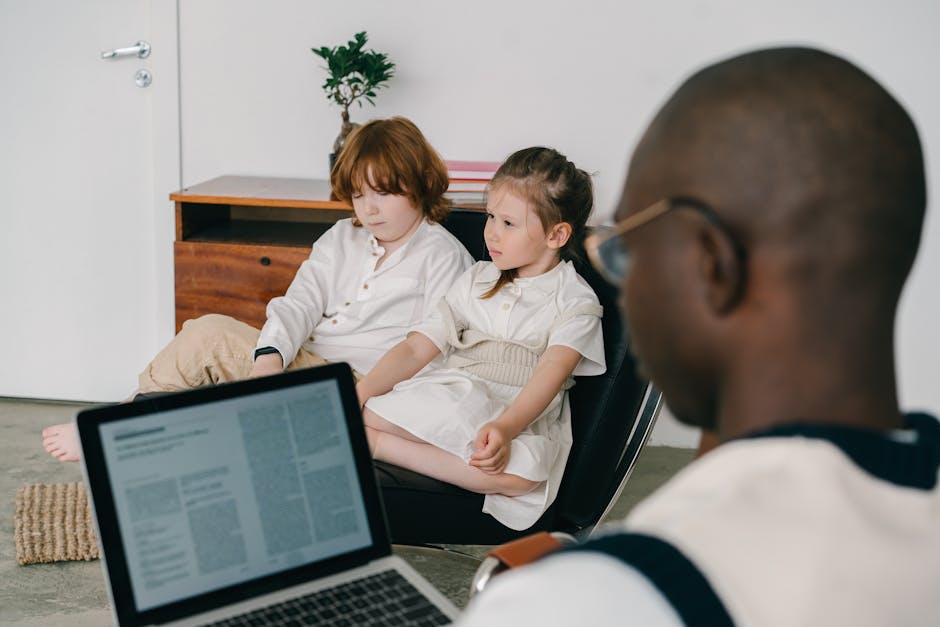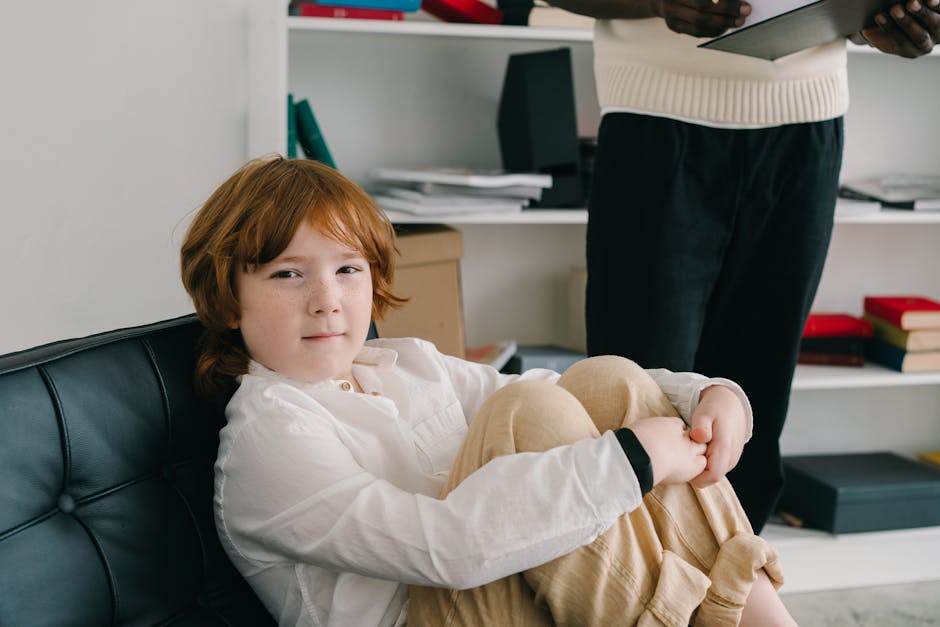- Raising Brilliance
- Posts
- Autism Therapy Options Unpacked (No PhD Required!)
Autism Therapy Options Unpacked (No PhD Required!)
Discover autism therapy options, top treatments, and expert tips to help your child thrive. Navigate choices with confidence today!

Autism therapy options range from evidence-based behavioral approaches to developmental and complementary therapies. Here's a quick overview of the main options:
Applied Behavior Analysis (ABA) - Considered the gold standard; uses positive reinforcement to teach skills
Speech Therapy - Addresses communication challenges and language development
Occupational Therapy - Helps with sensory issues, daily living skills, and fine motor development
Developmental/Relationship-Based - Includes Floortime, RDI, focusing on social connections
Physical Therapy - Improves gross motor skills, coordination, and balance
Cognitive Behavioral Therapy - Helps manage anxiety and develop coping strategies
Complementary Therapies - May include music therapy, animal-assisted therapy, or art therapy
If you're a parent who just received an autism diagnosis for your child, you're likely feeling overwhelmed. Every child with autism has unique strengths and challenges, which is why there's no one-size-fits-all approach to therapy.
The good news? Research consistently shows that early intervention, ideally before age 3, yields the best long-term outcomes. Early, intensive, and individualized programs provide the strongest foundation for your child's development.
Remember this crucial point: You know your child best. Trust your instincts as you explore these options.

Why Early Intervention Matters
When it comes to autism therapy options, the saying "the earlier, the better" couldn't be more true. Those first few years represent an incredible window of opportunity, as your child's brain forms connections at a remarkable pace.

According to research highlighted by the CDC, therapies started before age 3 have the most significant long-term impact. The American Academy of Pediatrics recommends starting therapy as soon as you notice concerning signs – even before receiving a formal diagnosis.
Early Intensive Behavioral Intervention (EIBI), a comprehensive form of ABA therapy typically provided 20-40 hours weekly for young children, has shown remarkable results in improving cognitive abilities, language development, and adaptive skills.
Every U.S. state offers early intervention services for children from birth to age 3 who show developmental delays or have been diagnosed with autism, typically at little to no cost to families.
Signs to Act On Before Age 3
While autism can be reliably diagnosed around age 2, the signs often appear earlier. Trust your instincts if you notice:
Limited or no eye contact
Not responding to their name by 12 months
No babbling or pointing by 12 months
No single words by 16 months
No two-word phrases by 24 months
Loss of previously acquired speech or social skills
Unusual repetitive behaviors or restricted interests
If any of these red flags catch your attention, reach out to your pediatrician for a developmental screening right away.
Transition After Age 3
Your child's third birthday marks an important transition. Services typically shift from early intervention programs to your local school district, where an Individualized Education Program (IEP) becomes your new roadmap.
This IEP outlines what special education services and supports your child will receive. Public schools are legally required to provide services like occupational therapy and speech therapy to students who need them.
Community resources like specialized therapy centers, parent support groups, and inclusive recreational programs can provide additional support beyond school walls.
Top Autism Therapy Options Explained
When diving into autism therapy options, it can feel like learning a new language. Let's break down the main approaches into something practical for parents.

Applied Behavior Analysis (ABA)
ABA is often called the gold standard in autism treatment with the strongest research backing. Modern ABA uses positive reinforcement to help your child develop skills that make life easier and more fulfilling.
What makes ABA effective is personalization – therapy is designed specifically around your child's unique needs and interests. The time commitment varies from a few hours weekly to intensive programs of 20-40 hours.
Variations You'll Hear About
Discrete Trial Training (DTT) breaks skills into tiny pieces and teaches them through repetition. Learn more about Discrete Trial Training
Pivotal Response Training (PRT) focuses on motivation and responding to multiple cues through play-based activities.
Early Start Denver Model (ESDM) blends ABA principles with developmental approaches for children ages 12-48 months.
JASPER targets social communication in natural settings, often showing improvements within weeks.
One common confusion is thinking that DTT and ABA are the same thing. ABA is the broader science, while DTT is just one teaching technique. Here's more about the differences
Speech & Language Therapy
About 70% of kids on the spectrum work with a speech-language pathologist. Speech therapy helps with:
Clear speech production
Building vocabulary and grammar
Social communication skills
Alternative communication methods if speaking is challenging
Earlier intervention shows better results, with most children attending 1-3 sessions weekly. Learn more about speech therapy hours
Occupational & Physical Therapy
Occupational therapy helps with daily life skills including:
Sensory processing challenges
Fine motor skills
Self-care routines
Executive functioning skills
Why does a child with autism need occupational therapy? Because seemingly simple activities can be genuinely difficult when your brain processes information differently.
Physical therapy focuses on gross motor skills, improving coordination, balance, and physical strength to help your child move through the world more confidently.
Developmental & Relationship-Based Models
These approaches put relationships and emotional connection at the center.

DIR/Floortime involves getting down on the floor and following your child's lead in play. Rather than directing the activity, you join in and gradually expand their world.
Relationship Development Intervention (RDI) focuses on flexible thinking and adapting to changing circumstances, with parents as the primary therapists.
SCERTS prioritizes social communication, emotional regulation, and transactional support across different environments.
Social Stories are personalized short stories that describe social situations and appropriate responses.
Parent Training Programs give you tools to support your child's development at home.
Complementary Approaches
Animal-Assisted Therapy introduces animals into the therapy process. The benefits include reduced anxiety and increased social engagement.
Music therapy can improve communication, social skills, and emotional expression, especially for children who struggle with spoken language.
Neurofeedback monitors brain activity and provides feedback to help regulate it, though research is still developing.
These complementary therapies work best alongside evidence-based interventions, not as replacements. The research on Naturalistic Developmental Behavioral Interventions suggests that approaches combining developmental and behavioral principles show the most promise.
Medications & Medical Management
While no medication treats autism itself, certain medications can help manage specific symptoms:
Antipsychotics like risperidone and aripiprazole target irritability and aggression
ADHD medications help with attention and hyperactivity
Anxiety medications can make it easier to try new things and participate socially
Medications for sleep, seizures, and GI issues address common co-occurring conditions
Medication should always be part of a comprehensive treatment plan that includes behavioral and educational supports.
Building a Personalized Plan & Choosing Providers
Creating an effective intervention plan for a child with autism is like building a custom home – it needs to be designed specifically for your child's unique needs.

Your journey begins with a comprehensive assessment from various specialists like developmental pediatricians, psychologists, speech therapists, and occupational therapists. These assessments provide the foundation for setting specific, measurable goals with your therapy team.
Regular progress monitoring helps you and your team see what's working and what needs adjusting. Most evidence-based therapies include systematic data collection to track your child's development.
Most families find that a team approach works best, including behavioral therapists, speech-language pathologists, occupational therapists, physical therapists, educators, medical providers, and mental health professionals.
Insurance coverage can be challenging to steer. Many states have autism insurance mandates requiring coverage for certain therapies (especially ABA), but coverage limits vary widely. Some families supplement with Medicaid, educational services, or private funding.
Telehealth has opened new doors for many families, especially those in rural areas or with transportation challenges. For many, a hybrid approach with some in-person and some virtual sessions works best.
Many parents wonder: Can You Get ABA Therapy Without an Autism Diagnosis? While insurance typically requires a formal diagnosis, some early intervention programs offer services based on developmental delays without requiring the autism label.
Questions to Ask Every Provider
When interviewing potential providers, ask about:
Credentials and experience working with children like yours
Treatment approach – how they individualize therapy and measure progress
Practical matters like staff ratios, session length, and cancellation policies
Family involvement – the best providers view parents as essential partners
Cost and insurance details to avoid surprises
Trust your parent intuition during these conversations. The right provider will welcome your questions and respect your expertise about your child.
Blending Therapies for Maximum Impact
Many families find that a thoughtfully blended approach works best for their child, combining elements like ABA, speech therapy, occupational therapy, and social skills groups.
The secret to making this blend work? Coordination among providers. When therapists communicate regularly and use consistent approaches, your child doesn't have to figure out different expectations across settings.
Skill generalization – using learned skills across different settings and situations – transforms therapy from isolated practice to real-life success.
Your role as a parent is essential. The most effective programs include parent coaching, teaching you strategies to reinforce learning during everyday routines.

This journey isn't a sprint – it's a marathon. Your child's needs will evolve over time, and your therapy plan should evolve too.
Frequently Asked Questions about Autism Therapy Options
What goals can therapy realistically achieve?
Therapy can help your child make significant progress in several key areas:
Communication skills ranging from simple requesting to complex conversation
Social skills like taking turns and understanding others' perspectives
Daily living skills for greater independence
Behavioral regulation to reduce challenging behaviors
Academic and cognitive skills for learning and problem-solving
Fine and gross motor skills for physical activities
Progress looks different for everyone. The real goal isn't perfection – it's helping your child reach their unique potential and experience a higher quality of life.
How many hours of therapy does my child need?
Therapy intensity depends on your child's individual needs, age, and the specific therapies they're receiving:
ABA therapy: Research supports 20-40 hours weekly for young children with significant needs, though many make excellent progress with 10-20 hours weekly
Speech therapy: Typically 1-3 sessions per week (30-60 minutes each)
Occupational therapy: Usually 1-2 times weekly (30-60 minutes per session)
Developmental therapies: Often multiple short sessions (20-30 minutes) throughout the day
Social skills groups: Typically once weekly (60-90 minutes)
Quality matters as much as quantity, and children need time for play, rest, and family activities. As your child progresses, expect the intensity to adjust.
Do therapies change as autistic individuals grow?
Absolutely! The needs of autistic individuals evolve across the lifespan:
Early childhood (0-5 years): Building foundational skills with intensive intervention
School years (6-12): Academic support, classroom accommodations, and more complex social skills
Adolescence (13-17): Social navigation, self-advocacy, preparation for independence
Adulthood (18+): Vocational training, independent living skills, relationship support
Transition planning becomes particularly important during adolescence as families prepare for adulthood.
Throughout all life stages, effective therapy respects the individual's autonomy, preferences, and goals. Self-determination becomes increasingly important as individuals mature.
Conclusion
Navigating autism therapy options can feel overwhelming, but you don't have to figure everything out at once. Start with a thorough assessment to understand your child's unique strengths and challenges, then build your therapy plan one piece at a time.
The research is clear: early intervention matters tremendously, but it's never too late to start. Evidence-based approaches like ABA, speech therapy, and occupational therapy provide the strongest foundation, but they need to be customized to your child's specific needs.
Family involvement boosts therapy outcomes significantly. When parents are actively engaged and equipped with strategies to use at home, progress often accelerates dramatically.
As you build your therapy team, prioritize coordination among providers. When everyone shares goals, strategies, and progress updates, the impact is greater than the sum of individual therapies.
Therapy needs evolve as your child grows. What works for a 3-year-old looks very different from what works for a teenager. Be prepared to adjust your approach as your child develops.
At Raising Brilliance, we believe every family deserves access to quality information and support. That's why we provide free resources to help you steer life with your neurodiverse child.
This journey isn't just about reaching a destination – it's about celebrating small victories along the way. That first word, that spontaneous hug, that moment of connection – these are the milestones that matter.
Trust your parental instincts – you know your child better than anyone. Use this guide as a starting point, but always filter recommendations through your understanding of your child's unique personality and needs.
For more free resources and ongoing support, visit our Raising Brilliance support hub. You're not alone on this journey. With the right information, support, and patience, you can help your child build a fulfilling, joyful life filled with meaningful connections.